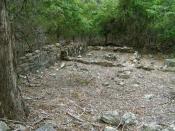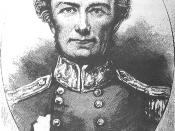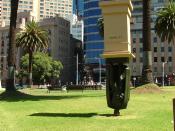When just one piece of evidence is presented, the possibility of the Portuguese discovering Australia seems highly unlikely. However when all evidence is taken into consideration, the theory seems more plausible. Recently evidence has started to appear all over Australia that supports the claim. That Captain Cook was not the first European explorer to set foot on Australia. Some people have claimed to have found evidence that the Portuguese discovered the east coast of Australia in the 1520s.
Such evidence includes a Portuguese Brass Cannon found in Western Australia, The Mahogany ship, Bitangabee Bay, Dauphin map, De JodeÃÂs world Atlas and La TrobeÃÂs keys.
The Portuguese Brass Cannon that was found on the Western Coast of Australia is not an acceptable piece of evidence. The Portuguese brass cannon was found in 1916 on an island in the North coast of Western Australia with a date (1512) carved on to the barrel.
While the brass cannon does seem to support the claim of the Portuguese discovering Australia, it is not related to the claim that the Portuguese discovered the East Coast in the 1520ÃÂs, because the cannon was found on the Western Coast of Australia.
The Mahogany ship, first sighted in the 1800s, is an unacceptable piece of evidence. The Mahogany ship was first sighted by English Australians in the Victorian town of Warrnambool in 1836. The significance of this ship is that the vessel did not resemble ships built in northern Europe in the 18th or 19th centuries and that the materials used to make the ship were foreign; which stands to suggest that Britain was not the first country to discover the east coast of Australia or maybe even Australia itself. The major flaw with this piece of evidence is the fact that the ship has been...


